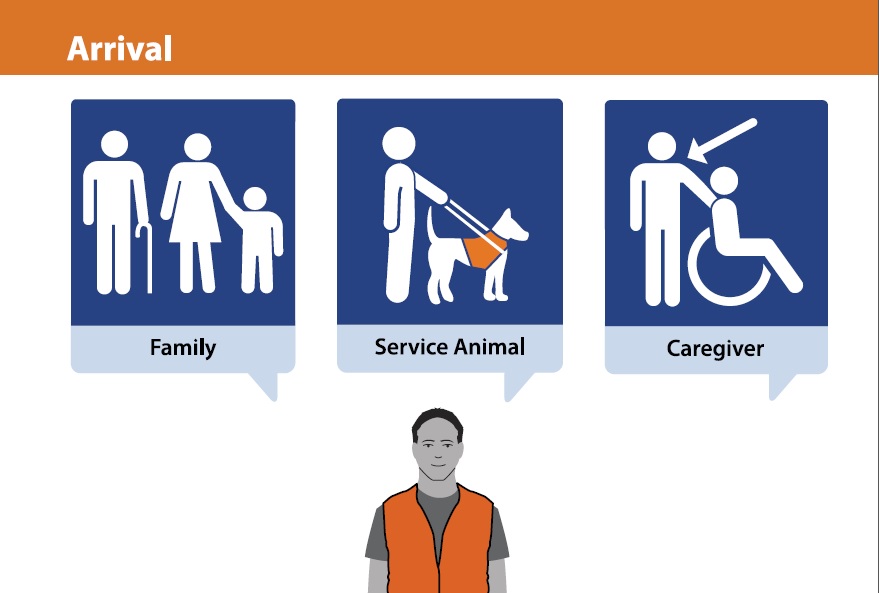Late last week, the United States District Court, Southern District of New York handed down a ruling on the Brooklyn Center for Independence of the Disabled v. The City of New York, a class action lawsuit brought on behalf of all persons with disabilities. The suit charged that the New York City Emergency Preparedness Program failed to accommodate the needs of disabled persons in planning for the evacuation of multistory buildings, failed to provide accessible shelter systems, ignored the unique needs of people with disabilities in the event of power outages, failed to communicate adequately with people with special needs during an emergency, and failed to account for the needs of people with disabilities in recovery operations.
After more than 25,000 pages of exhibits, several hundred pages of legal briefings and testimony from numerous individuals, the court ruled that the City violated the Americans with Disabilities Act (ADA), the Rehabilitation Act, and the New York City Human Rights Law by failing to provide meaningful access to the emergency preparedness program.
In the 119 page ruling, the court explained the shortcomings of the City’s program. Specifically, the Court pointed to the following deficiencies:
- The City’s evacuation plans do not accommodate the needs of people with disabilities with respect to high-rise evacuation and accessible transportation;
- The City’s shelter plans do not require that the shelter system be sufficiently accessible, either architecturally or programmatically, to accommodate people with disabilities in an emergency;
- The City has no plan for canvassing or for otherwise ensuring that people with disabilities — who may, because of their disability, be unable to leave their building after a disaster — are able to access the services provided by the City after an emergency;
- The City’s plans to distribute resources in the aftermath of a disaster do not provide for accessible communications at the facilities where resources are distributed;
- The City’s outreach and education program fails in several respects to provide people with disabilities the same opportunity as others to develop a personal emergency plan; and
- The City lacks sufficient plans to provide people with disabilities information about the existence and location of accessible services in an emergency.
This is the second case in recent memory to focus on the ADA in regards to emergency preparedness programs. Back in 2011, a California court found that the City of Los Angeles failed to “include provisions to notify people with auditory impairments or cognitive disabilities of an emergency, or evacuate, transport, or temporarily house individuals with disabilities during or immediately following an emergency or disaster,” thus violating the ADA and the Rehabilitation Act.
Over the past several years, NACCHO, ASTHO, and the CDC have been working on developing resources to encourage Whole Community involvement in preparedness planning and activities. The Whole Community Inclusion Project Website offers many free resources to aid in Whole Community planning. In addition, NACCHO has developed a factsheet featuring links to numerous resources for inclusive planning, preparedness, and response.
Understanding that the ADA prevents intentional discrimination and also discrimination that results from thoughtlessness and indifference means we must carefully examine our preparedness plans and policies. It is not simply enough to erect a wheelchair ramp to the entrance, we must also evaluate bathrooms, food service, medical stations, rest areas, and other components to ensure accessibility. Officials should be working with community partners to test, evaluate, improve, and document these plans and findings.

A page from Show Me: A Communications Tool for Emergency Shelters by the Massachusetts Department of Public Health
In addition to architectural requirements, communication needs should be accommodated. The Department of Justice is responsible for implementing the ADA, and their regulations carry great weight in the courts. Regulations promulgated by the Department of Justice provide that a “public entity shall take appropriate steps to ensure that communications with individuals with disabilities are as effective as communications with others.” This may include pictogram signage, interpreter services, sign language interpreters, Braille, and other means of communications designed for people with hearing and sight impairments.
The Kentucky Department for Public Health has a great selection of pictorgrams designed to be used in Points of Dispensing. The Massachusetts Department of Public Health has developed a communications tool for emergency shelters that uses pictograms. Likewise, the NACCHO Advanced Practice Centers Project has developed an easy-to-use pocket translator and pictogram tools. The Northeast Texas Public Health District has also developed many tools, including large print and Braille documents for use in emergency situations.
It is important to note that these rulings do not discredit the great work being performed in preparedness every day, but rather serve as a reminder that ADA issues need to be addressed in all preparedness activities. As always, personal preparedness enhances community preparedness, and there are a lot of tools that can help individuals with disabilities become more prepared. Ready.gov features a section on personal preparedness for individuals with functional or access needs. The Assistant Secretary for Preparedness and Response has a website on personal preparedness for individuals with disabilities, with a focus on sheltering in place and evacuation. The Red Cross also has a publication on personal preparedness for people with disabilities.
As court cases such as New York and Los Angeles continue to be decided, it is important that we clearly articulate what we are doing to include all of our citizens in planning and response efforts. As is true with most legal matters: documentation is key.








